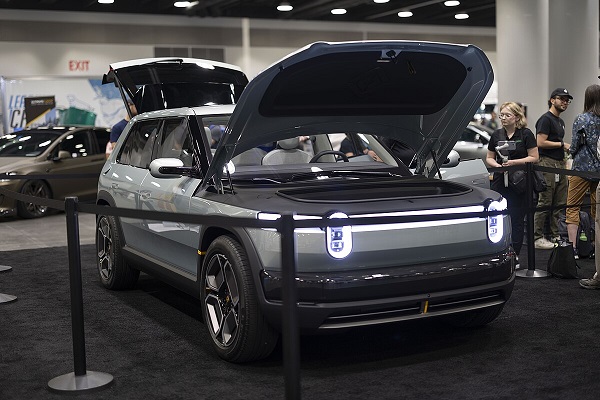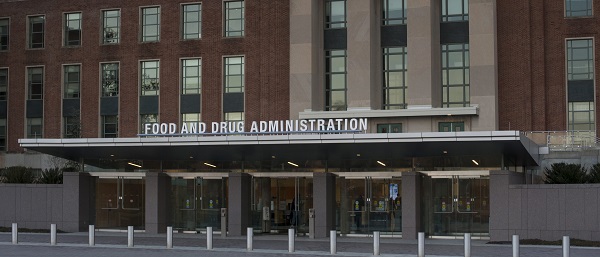Automotive
Electric-vehicle sales show modest spark

From Resource Works
Fuel-powered cars still outsell EVs in Canada by almost 7:1
While the federal government pushes electric vehicles (and other zero-emission vehicles), Canadians seem to be somewhat less enthusiastic about them.
Ottawa calls them all ZEVs and says: “Canada is committed to decarbonizing the country’s transportation sector and becoming a global leader in ZEVs. As such, the Government of Canada is aiming for 100% of new light-duty sales to be zero-emission by 2035.”
However, even with rebates offered by Ottawa and eight provinces and territories, Canadians are proving a little reluctant to make the switch—especially to pure battery-only electric vehicles (EVs).
For example, in the second quarter of this year, Statistics Canada reported sales of 511,173 new motor vehicles, the largest number since the third quarter of 2019, prior to the COVID-19 pandemic.
Of those 511,173 vehicles, 445,231 (87.1%) were traditional carbon-fuel cars, vans, and light trucks. Meanwhile, 65,733 were EVs (12.9%). Thus, fuel-powered cars outsold EVs by a ratio of 6.8 to one.
Among the 65,733 EVs sold, 48,511 were pure battery-only vehicles, while 17,222 were hybrid models with both electric and carbon-fuel drives.
This is not quite what Ottawa had hoped for.
(Incidentally, 51.6% of all new EV registrations were in Quebec, followed by Ontario at 21.9%, and British Columbia at 18.5%. In the Statistics Canada survey, the numbers for BC also include the territories.)
When market research company J.D. Power surveyed new-vehicle shoppers in Canada, respondents who said they wouldn’t consider an EV cited high prices, concerns about travel range, and challenges with charging the battery as key reasons.
J.D. Ney of J.D. Power notes that mainstream vehicle buyers are less wealthy and more practical, making them harder to persuade to switch from gas-powered cars.
“If I make a mistake buying an EV or it doesn’t suit my lifestyle, that’s a $65,000 problem. It’s the second-biggest purchase that most Canadians will make. And so, I think they are rightfully cautious.”
As of March 1 (the latest figures available), Canada had 27,181 public charging ports located at 11,077 public charging stations across the country.
Of those 27,181 charging ports, 22,246 are “standard” Level 2 chargers, while 4,935 are fast chargers.
This means Canadians with battery-electric vehicles often face challenges finding an available public port, and, if they do find one, it could take hours to recharge their car from low to 100%. Most ZEV drivers opt instead to “top up” their batteries, but even that can take many minutes.
The availability of fast chargers in Canada is on the rise, with EV manufacturer Tesla adding more “superchargers” that can be used by non-Tesla owners if their vehicles are equipped with the right plug-in adapter or if the owners purchase a suitable adapter.
Electric vehicles are also improving their range, with some models now able to travel as much as 800 km before needing a major recharge. The average range is 435 km, although some older ZEVs still have ranges in the low hundreds.
Potential ranges drop, however, in Canadian cold weather. Some EVs can lose up to 30% of their range in freezing temperatures, and charging times can also increase in the cold.
The concerns and caution of customers have resonated with EV manufacturers.
As CBC News reported: “Just a few years ago, carmakers were investing billions of dollars into their electric lineups and pledging they would soon stop building gas-powered cars.
“But customers aren’t going fully electric as quickly as predicted, so many companies are making adjustments to better meet demand.
“General Motors has scaled back its electric vehicle production this year and will build an estimated 50,000 fewer EVs. Ford is shifting its strategy, stalling plans for an electric SUV and building a hybrid version instead.
“These companies are still losing money on EVs. Despite all that, the carmakers insist they’re still committed to the cause.”
In April, Honda announced plans to invest $11 billion in electric vehicle and battery plants in Ontario. The project aims to produce 240,000 EVs annually, with production expected to begin in 2028.
At the same time, construction of a $7-billion EV battery plant in Quebec could take up to 18 months longer than originally planned, according to the Quebec government.
Production at the Northvolt plant was slated to begin in 2026 to compete with Chinese-made batteries. However, while construction continues, a review by Northvolt could result in a reassessment of the timetable. This review followed Northvolt’s bankruptcy filing in the U.S.
Here in Canada, Ottawa began in August imposing a 100% tariff on Chinese-made EVs. The aim is to protect the domestic EV market from inexpensive Chinese imports. But President-elect Donald Trump proposes a 25% tariff on all imports from Canada, including Canadian-made EVs and parts. This is causing huge concern for firms planning to build EVs and/or EV parts in Canada for export to the U.S.
Returning to EVs: The federal government’s goals are for 20% of new cars sold to be ZEVs by 2026, 60% by 2030, and 100% by 2035.
Carmakers, however, have said those goals won’t be achievable unless Ottawa does more to boost charging infrastructure and address EV affordability.
“We have all of the ingredients for Canada to succeed in this sector,” says Brian Kingston, president of the Canadian Vehicle Manufacturers’ Association. “I’m convinced we’ll continue to see growth in EV adoption, but we do have to address some of those barriers to demand.”
Automotive
Canada’s EV gamble is starting to backfire

Things have only gone from bad to worse for the global Electric Vehicle industry. And that’s a problem for Canada, because successive Liberal governments have done everything in their power to hitch our cart to that horse.
Earlier this month, the Trump Administration rolled back more Biden-era regulations that effectively served as a back-door EV mandate in the United States. These rules mandated that all passenger cars be able to travel at least 65.1 miles (and for light trucks, 45.2 miles) per gallon of gasoline or diesel, by the year 2031. Since no Internal Combustion Engine (ICE) vehicle could realistically conform to those standards, that would have essentially boxed them out of the market.
Trump’s rolling them back was a fulfillment of his campaign promise to end the Biden Administration’s stealth EV mandates. But it was also a simple recognition of the reality that EVs can’t compete on their own merits.
For proof of that, look no further than our second bit of bad news for EVs: Ford Motor Company has just announced a massive $19.5 billion write-down, almost entirely linked to its aggressive push into EVs. They’ve lost $13 billion on EVs in the past two years alone.
The company invested tens of billions on these go-carts, and lost their shirt when it turned out the market for them was miniscule.
Ford’s EV division president Andrew Frick explained, “Ford is following the customer. We are looking at the market as it is today, not just as everyone predicted it to be five years ago.”
Of course, five years ago, the market was assuming that government subsidies-plus-mandates would create a market for EVs at scale, which hasn’t happened.
As to what this portends for the market, the Wall Street Journal argued, “The company’s pivot from all-electric vehicles is a fresh sign that America’s roadways – after a push to remake them – will continue to look in the near future much like they do today, with a large number of gas-powered cars and trucks and growing use of hybrids.”
And that’s not just true in the U.S. Across the Atlantic, reports suggest the European Union is preparing to delay their own EV mandates to 2040. And the U.K.’s Labour government is considering postponing their own 2030 ICE vehicle ban to align with any EU change in policy.
It’s looking like fewer people around the world will be forced by their governments to buy EVs. Which means that fewer people will be buying EVs.
Now, that is a headache for Canada. Our leaders, at both the federal and provincial levels, have bet big on the success of EVs, investing billions in taxpayer dollars in the hopes of making Canada a major player in the global EV supply chain.
To bolster those investments, Ottawa introduced its Electric Vehicle mandate, requiring 100 per cent of new light-duty vehicle sales to be electric by 2035. This, despite the fact that EVs remain significantly more expensive than gas-and-diesel driven vehicles, they’re poorly suited to Canada’s vast distances and cold climate, and our charging infrastructure is wholly inadequate for a total transition to EVs.
But even if these things weren’t true, there still aren’t enough of us to make the government’s investment make sense. Their entire strategy depends on exporting to foreign markets that are rapidly cooling on EVs.
Collapsing demand south of the border – where the vast majority of the autos we build are sent – means that Canadian EVs will be left without buyers. And postponed (perhaps eventually canceled) mandates in Europe mean that we will be left without a fallback market.
Canadian industry voices are growing louder in their concern. Meanwhile, plants are already idling, scaling back production, or even closing, leaving workers out in the cold.
As GM Canada’s president, Kristian Aquilina, said when announcing her company’s cancellation of the BrightDrop Electric delivery van, “Quite simply, we just have not seen demand for these vehicles climb to the levels that we initially anticipated…. It’s simply a demand and a market-driven response.”
Prime Minister Mark Carney, while sharing much of the same environmental outlook as his predecessor, has already been compelled by economic realities to make a small adjustment – delaying the enforcement of the 2026 EV sales quotas by one year.
But a one-year pause doesn’t solve the problem. It kicks the can down the road.
Mr. Carney must now make a choice. He can double down on this troubled policy, continuing to throw good money after bad, endangering a lot of jobs in our automotive sector, while making transportation more expensive and less reliable for Canadians. Or he can change course: scrap the mandates, end the subsidies, and start putting people and prosperity ahead of ideology.
Here’s hoping he chooses the latter.
The writing is on the wall. Around the world, the forced transition to EVs is crashing into economic reality. If Canada doesn’t wake up soon, we’ll be left holding the bag.
Automotive
Ford’s EV Fiasco Fallout Hits Hard


From the Daily Caller News Foundation
I’ve written frequently here in recent years about the financial fiasco that has hit Ford Motor Company and other big U.S. carmakers who made the fateful decision to go in whole hog in 2021 to feed at the federal subsidy trough wrought on the U.S. economy by the Joe Biden autopen presidency. It was crony capitalism writ large, federal rent seeking on the grandest scale in U.S. history, and only now are the chickens coming home to roost.
Ford announced on Monday that it will be forced to take $19.5 billion in special charges as its management team embarks on a corporate reorganization in a desperate attempt to unwind the financial carnage caused by its failed strategies and investments in the electric vehicles space since 2022.
Cancelled is the Ford F-150 Lightning, the full-size electric pickup that few could afford and fewer wanted to buy, along with planned introductions of a second pricey pickup and fully electric vans and commercial vehicles. Ford will apparently keep making its costly Mustang Mach-E EV while adjusting the car’s features and price to try to make it more competitive. There will be a shift to making more hybrid models and introducing new lines of cheaper EVs and what the company calls “extended range electric vehicles,” or EREVs, which attach a gas-fueled generator to recharge the EV batteries while the car is being driven.
Dear Readers:
As a nonprofit, we are dependent on the generosity of our readers.
Please consider making a small donation of any amount here.
Thank you!
“The $50k, $60k, $70k EVs just weren’t selling; We’re following customers to where the market is,” Farley said. “We’re going to build up our whole lineup of hybrids. It’s gonna be better for the company’s profitability, shareholders and a lot of new American jobs. These really expensive $70k electric trucks, as much as I love the product, they didn’t make sense. But an EREV that goes 700 miles on a tank of gas, for 90% of the time is all-electric, that EREV is a better solution for a Lightning than the current all-electric Lightning.”
It all makes sense to Mr. Farley, but one wonders how much longer the company’s investors will tolerate his presence atop the corporate management pyramid if the company’s financial fortunes don’t turn around fast.
To Ford’s and Farley’s credit, the company has, unlike some of its competitors (GM, for example), been quite transparent in publicly revealing the massive losses it has accumulated in its EV projects since 2022. The company has reported its EV enterprise as a separate business unit called Model-E on its financial filings, enabling everyone to witness its somewhat amazing escalating EV-related losses since 2022:
• 2022 – Net loss of $2.2 billion
• 2023 – Net loss of $4.7 billion
• 2024 – Net loss of $5.1 billion
Add in the company’s $3.6 billion in losses recorded across the first three quarters of 2025, and you arrive at a total of $15.6 billion net losses on EV-related projects and processes in less than four calendar years. Add to that the financial carnage detailed in Monday’s announcement and the damage from the company’s financial electric boogaloo escalates to well above $30 billion with Q4 2025’s damage still to be added to the total.
Ford and Farley have benefited from the fact that the company’s lineup of gas-and-diesel powered cars have remained strongly profitable, resulting in overall corporate profits each year despite the huge EV-related losses. It is also fair to point out that all car companies were under heavy pressure from the Biden government to either produce battery electric vehicles or be penalized by onerous federal regulations.
Now, with the Trump administration rescinding Biden’s harsh mandates and canceling the absurdly unattainable fleet mileage requirements, Ford and other companies will be free to make cars Americans actually want to buy. Better late than never, as they say, but the financial fallout from it all is likely just beginning to be made public.
- David Blackmon is an energy writer and consultant based in Texas. He spent 40 years in the oil and gas business, where he specialized in public policy and communications.
-

 Energy2 days ago
Energy2 days agoWestern Canada’s supply chain for Santa Claus
-

 Alberta2 days ago
Alberta2 days agoOttawa-Alberta agreement may produce oligopoly in the oilsands
-

 Energy2 days ago
Energy2 days agoThe Top News Stories That Shaped Canadian Energy in 2025 and Will Continue to Shape Canadian Energy in 2026
-

 International2 days ago
International2 days ago$2.6 million raised for man who wrestled shotgun from Bondi Beach terrorist
-

 armed forces20 hours ago
armed forces20 hours agoRemembering Afghanistan and the sacrifices of our military families
-

 Fraser Institute20 hours ago
Fraser Institute20 hours agoHow to talk about housing at the holiday dinner table
-

 Frontier Centre for Public Policy19 hours ago
Frontier Centre for Public Policy19 hours agoTent Cities Were Rare Five Years Ago. Now They’re Everywhere
-

 Opinion20 hours ago
Opinion20 hours agoPope Leo XIV’s Christmas night homily










